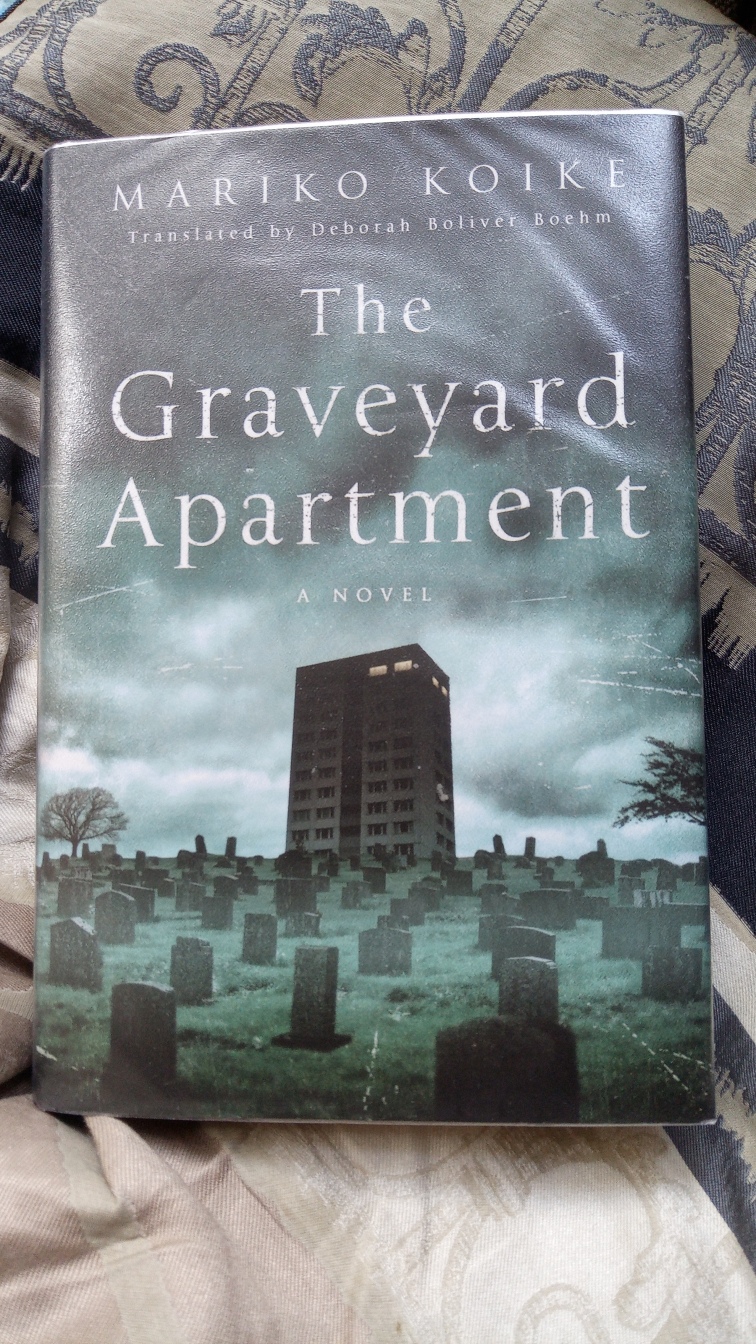
This book revolves around a husband (Teppei), wife (Misao), their four year old daughter (Tamao), dog (Cookie) and bird (Pokyo). They are sick of throwing away money by renting an apartment and decide to buy one instead. They see a very affordable, new apartment in the heart of the city of Tokyo for sale for a very affordable price. When they go to see the apartment they discover that it is located right next to a Buddhist cemetery and crematorium, however this does not deter the young family and they put down a deposit immediately.
The morning after they move in Misao discovers the previously healthy Pokyo dead in their cage. She breaks the news to Tamao and plans a small funeral to help the child deal with the death of her pet, while also trying to figure out the cause of death. The next morning Tamao begins claiming that Pokyo flew into her room and was telling her about the afterlife and warning her about evil spirits and shadows. Misao becomes upset with Tamao and, what she believes to be, her imaginary friend. But then she begins to find Pokyos feathers scattered throughout the apartment…
Misao begins to develop a wariness regarding the apartment, especially the basement where each apartment has a large storage locker. This concern is heightened when she realises that the only way in and out of this area is by using the elevator – the stairwell doesn’t descend beyond the ground floor! She voices her concerns to Teppei, especially about the possibility of being stuck down there during a power cut, but he thinks that she’s just being paranoid and blames her panic and worries on her negative fixation on the nearby graveyard.
One by one their neighbours begin moving out, despite only living in the complex for a few months. Why is everyone leaving? What are the strange sounds coming from the basement? Is Pokyo really visiting and trying to communicate a warning?
When I first read this book I found it boring. To me it just felt drawn out rather than suspenseful. However I then learned that this book was published in 1988 and I felt that this somewhat changed my view of it.
To fully appreciate this book one needs to understand that the characters are in a time without mobile phones or the internet. One of the huge factors that makes up the creepiness of this novel is, without saying too much, how the residents of this complex become essentially cut off from the outside world. The isolation and loneliness that it’s caused by something as small as a landline being disconnected can be difficult to imagine in today’s world of Facebook and WhatsApp, so because of this I feel that it is important to be aware of the year of the books original publication.
Even with the above knowledge, however, I still didn’t enjoy this book as much as I wanted to. I felt that the first half of the book was very drawn out as the author was clearly trying to make it creepy in a subtle and suspenseful way, but I just felt that it was written in a way that anything that could be creepy was too easy to explain in a factual way, e.g. a creepy nose in the basement could be creaky pipes, a human shaped shadow appearing in the corner of the television when they were trying to watch it could be interference because they were living in a city, etc. I just felt that this denial style approach was pointless as it’s a horror novel, so we already know the complex is more than likely haunted before we even read the first page, no need to try to convince the reader think otherwise for 50% of the story.
My other issue with the book was I didn’t find any of the characters to be likable. Tamao was tolerable, probably because she didn’t really speak much, however I didn’t find it possible to believe that she was for years old. I believe the author tried too hard to make her intelligent, and ended up taking away any possibility of her acting or speaking like a child. Teppei was extremely judgemental and nasty, especially regarding his ex-wife. Misao was a complainer, and although she praises Teppei repeatedly throughout the entire book she seems to have to tiptoe around his constantly as she appears to be terrified to do anything with which he may disagree. Their neighbours just came across as nosey to me, rather than caring.
The final complaint I have with the book is how some things are focused on, but then never explained. An example of this is after a certain point Tamao begins to say “Ho-kay” instead of “Okay”. Misao Bruins attention to this by saying that it’s probably something she had picked up from someone in her school, despite no one in the locale having that sort of accent. This is mentioned a good few times during the book, but no expansion is ever given, almost as if the author just ended up forgetting about it.
Despite my ranting I didn’t think that this was a very bad book. I would recommend this to anyone who enjoys ghost stories written by an author that takes the time to create and develop an atmosphere rather than just focusing on the story. However if you prefer your reading material to be creepy and unnerving from start to finish then I’d advise skipping this.